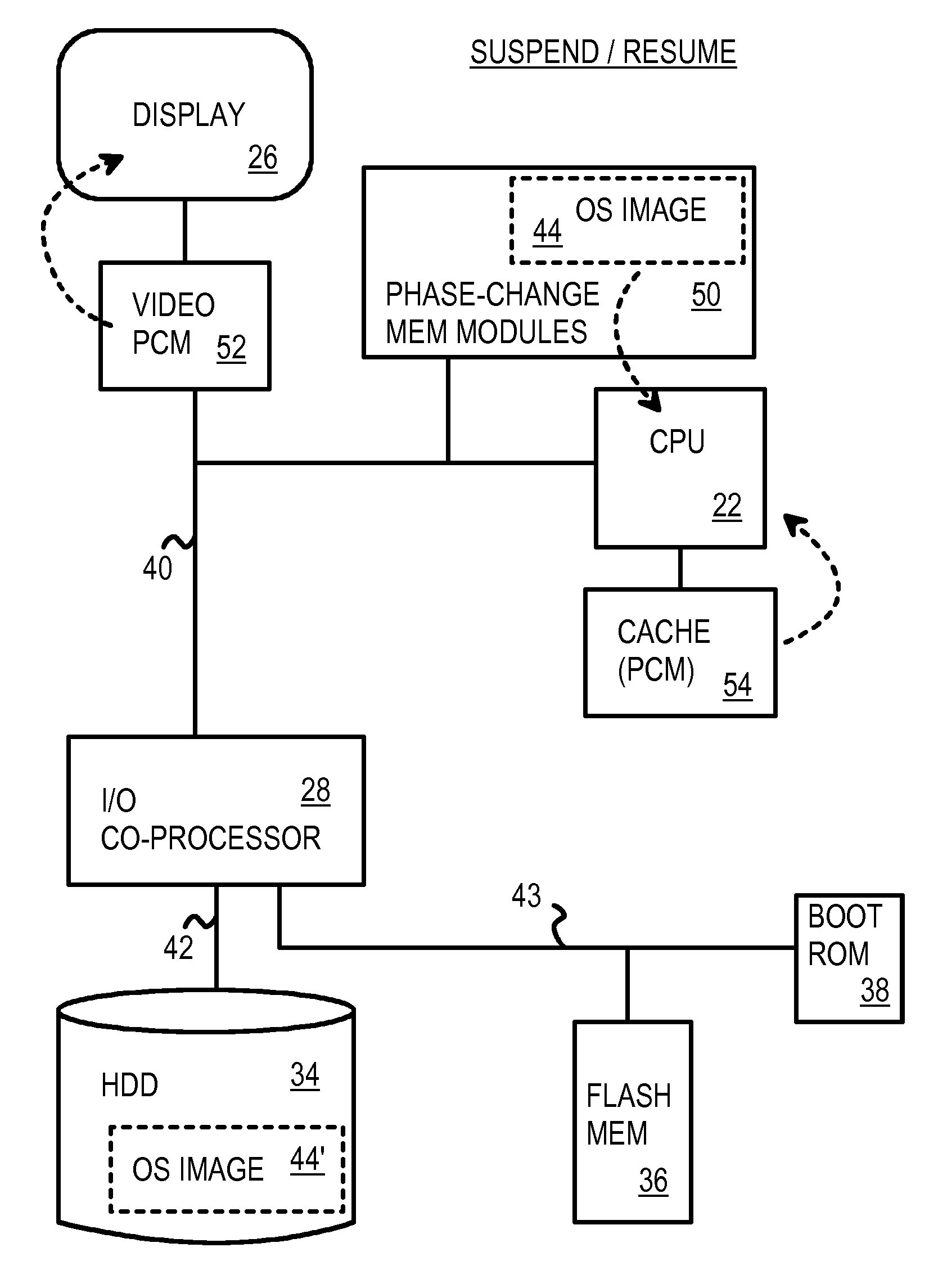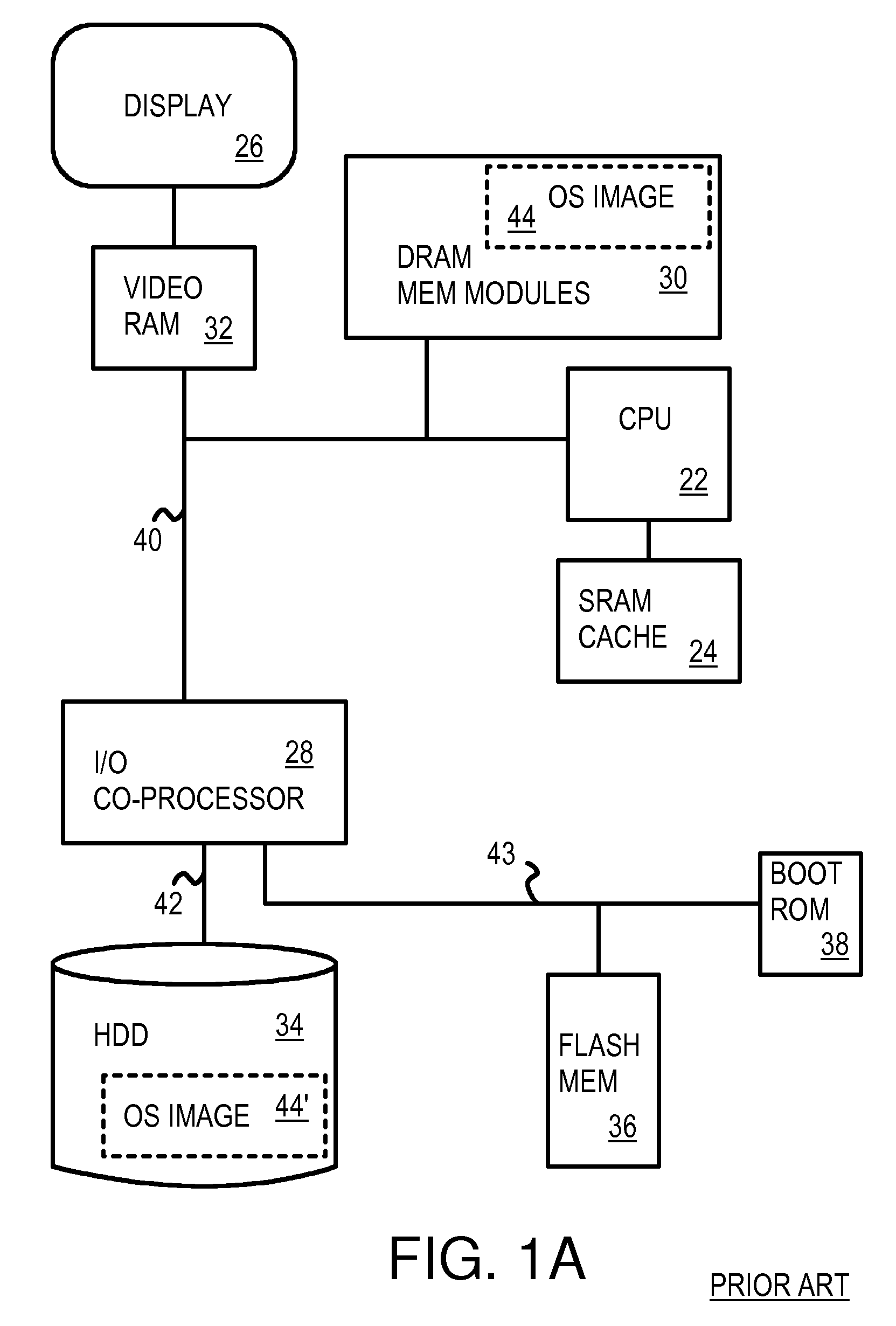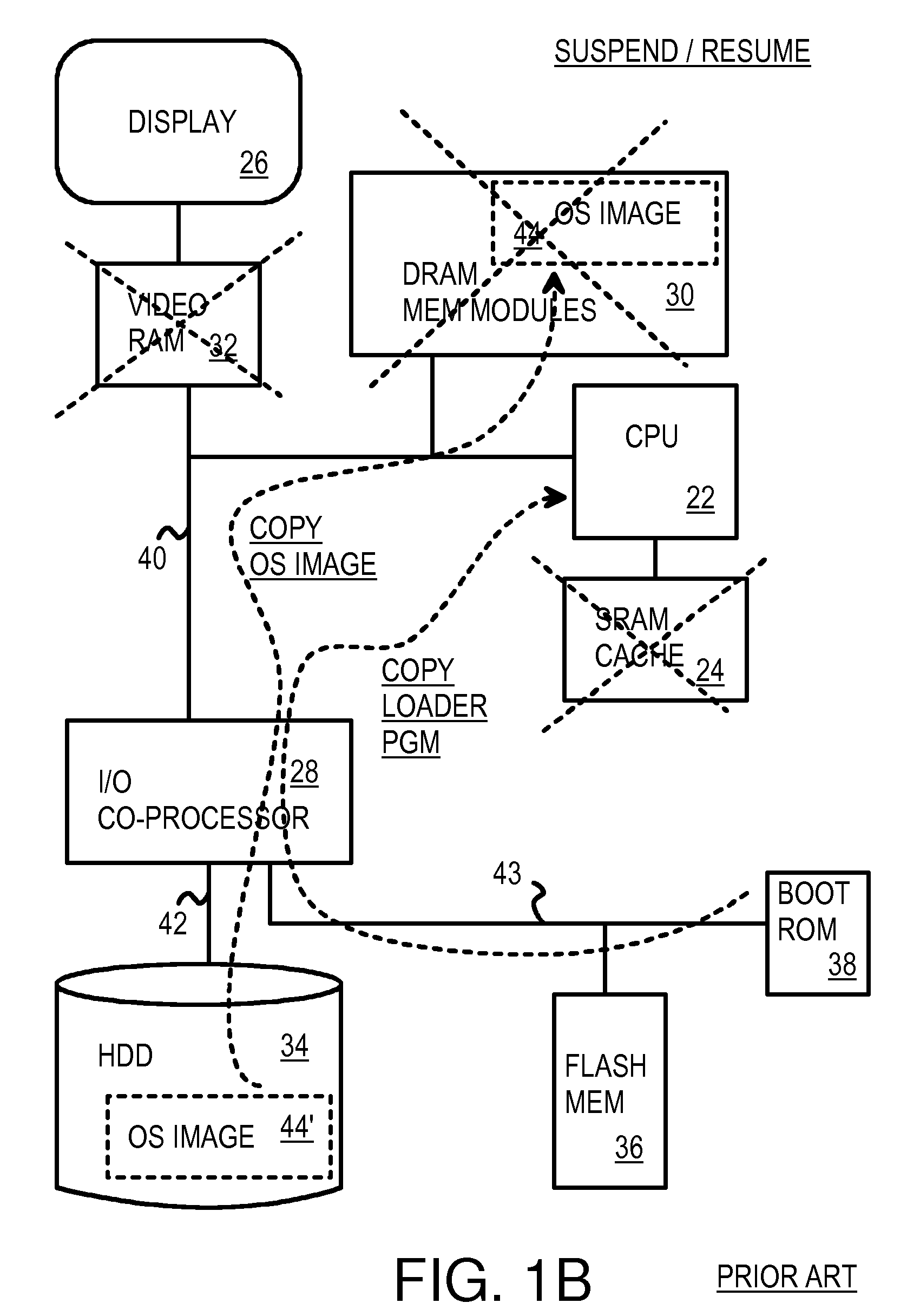Fast Suspend-Resume of Computer Motherboard Using Phase-Change Memory
a phase-change memory and motherboard technology, applied in the field of personal computers, can solve the problems of slow suspend/resume of the motherboard, inability to quickly resume the pc, and inability to fast suspend/resume the motherboard,
- Summary
- Abstract
- Description
- Claims
- Application Information
AI Technical Summary
Problems solved by technology
Method used
Image
Examples
Embodiment Construction
[0022]The present invention relates to an improvement in personal computer motherboards. The following description is presented to enable one of ordinary skill in the art to make and use the invention as provided in the context of a particular application and its requirements. Various modifications to the preferred embodiment will be apparent to those with skill in the art, and the general principles defined herein may be applied to other embodiments. Therefore, the present invention is not intended to be limited to the particular embodiments shown and described, but is to be accorded the widest scope consistent with the principles and novel features herein disclosed.
[0023]The inventors have realized that suspend / resume performance in a PC is limited by the awkward copying of operating-system image information from a slow hard disk drive to the volatile main memory. If the main memory were non-volatile, then such OS image copying would not be needed, and suspend / resume performance c...
PUM
 Login to View More
Login to View More Abstract
Description
Claims
Application Information
 Login to View More
Login to View More - R&D
- Intellectual Property
- Life Sciences
- Materials
- Tech Scout
- Unparalleled Data Quality
- Higher Quality Content
- 60% Fewer Hallucinations
Browse by: Latest US Patents, China's latest patents, Technical Efficacy Thesaurus, Application Domain, Technology Topic, Popular Technical Reports.
© 2025 PatSnap. All rights reserved.Legal|Privacy policy|Modern Slavery Act Transparency Statement|Sitemap|About US| Contact US: help@patsnap.com



